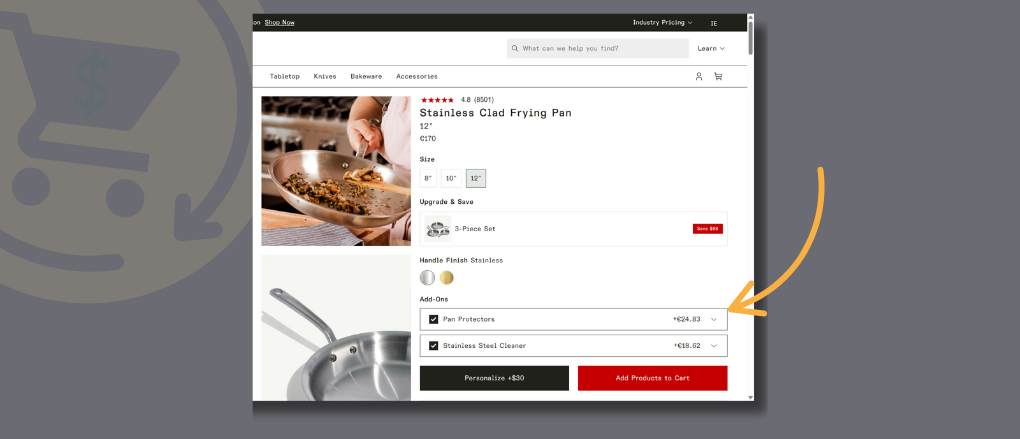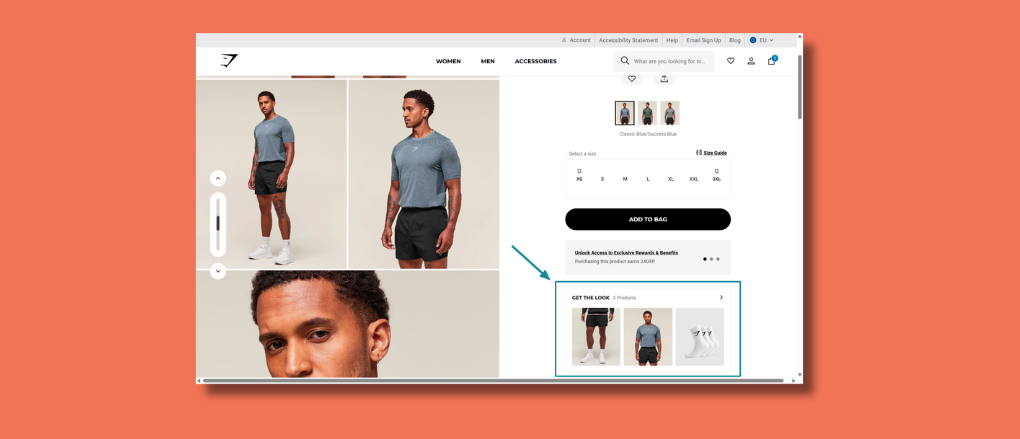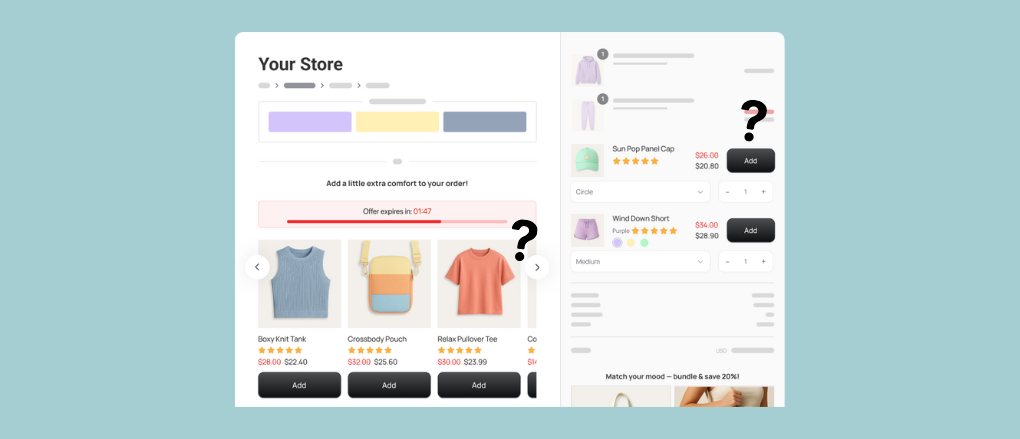5 Post-purchase Upsell Examples to Learn From
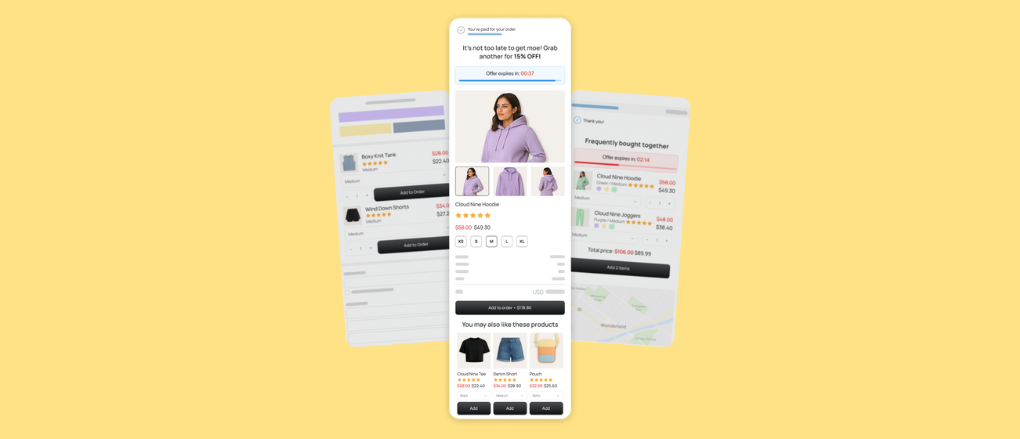
Post-purchase upsells aren’t just a tactic; they’re a proven revenue driver.
In fact, ReConvert data shows that merchants who use post-purchase upselling see a 5.6% uplift in average order value. And for some stores, it accounts for over 12% of total revenue.
You’ve already done the hard work - running ads, optimizing your store, and converting the sale.
The real growth happens after checkout. With the right post-purchase upsell strategy, you can boost AOV, retain more customers, and improve the shopping experience without spending a dollar more on acquisition.
In this post, we’ll break down what post-purchase upsells are, why they’re such a powerful opportunity for merchants, and real-world examples you can apply to your own Shopify store today.
Let's jump in!
What are post-purchase upsells?
A post-purchase upsell is an additional offer made to a customer after they’ve completed an order.
Unlike pre-purchase upsells that appear in the cart or before checkout, post-purchase offers show up once the buying decision is already made.
These upsells can take different forms:
- One-click add-ons that attach directly to the existing order without requiring re-entry of payment details
- Thank you pag offers or offers on the order confirmation page
- Follow-up emails or SMS with personalized recommendations
The timing is what makes them powerful. Post-purchase upsells respect the original buying journey - they don’t interrupt checkout, but instead give merchants multiple touchpoints to drive additional value.
Think of it like this: your customer has already crossed the finish line, and you’re simply offering a victory lap. Whether it’s a bundle upgrade, a complementary accessory, or a refill subscription, post-purchase upsells turn a single order into a bigger, more profitable relationship.
Why Post-purchase Upsells are a Unique Opportunity for Merchants
Most upselling tactics fight for attention in crowded spaces like product pages or the cart. Post-purchase upsells, on the other hand, work in a golden window where customer attention is at its peak and distractions are low.
Here’s why they’re so powerful:
- The buying momentum is real: Customers have already entered payment details and clicked “Buy.” They’re still in purchase mode, which means they’re far more likely to accept an add-on.
- Trust is already earned: The hardest part, convincing someone to purchase, is done. At this stage, a relevant offer feels natural instead of pushy.
- No extra acquisition cost: You’ve already paid to acquire that customer. Post-purchase upsells maximize the return on that spend without driving additional traffic.
- Multiple touchpoints: From thank you pages to order confirmation emails, there are several opportunities to present upsells without interrupting the original journey.
- Compounding revenue impact: Even a modest 5 percent AOV lift, applied consistently, can translate into thousands in extra monthly revenue.
For Shopify merchants, this isn’t just a clever trick, it’s a structural advantage. Post-purchase upsells give you a way to grow profit margins, reward customers with thoughtful offers, and stand out in an eCommerce landscape where acquisition costs keep climbing.
5 Post-purchase Upsell Examples to Try
Now that you know what a poat-purchase upsell is and why they’re important, let’s jump into some post-purchase upsell tactics that work.
1. Buy another at a discount (volume discounts)
One of the most effective post-purchase upsell strategies is the “buy another at a discount” offer. This works especially well for products that people naturally purchase in multiples or will need again soon.
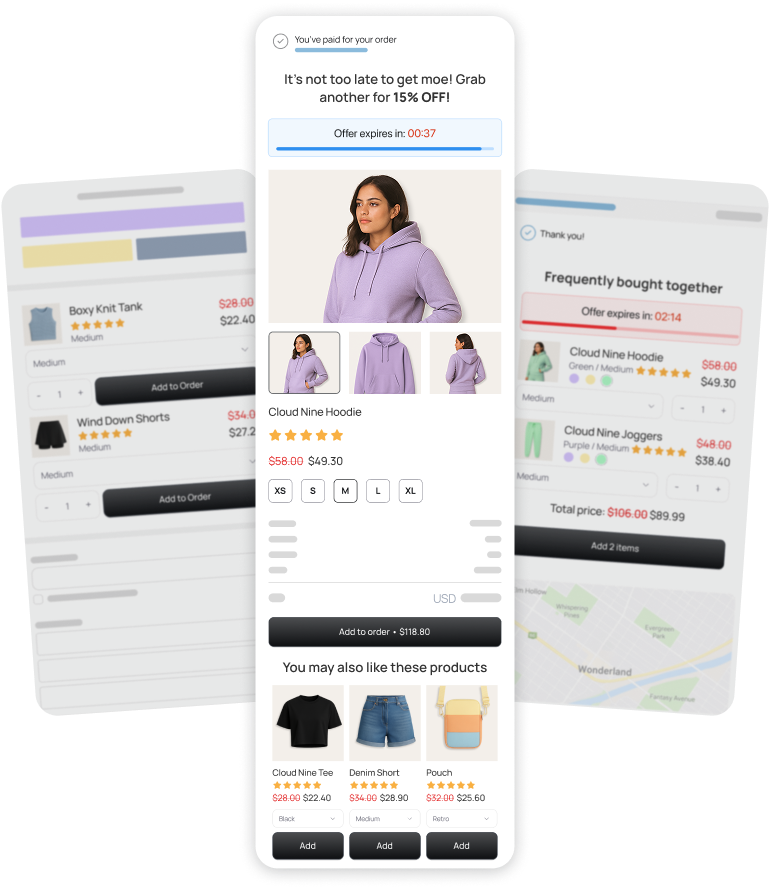
Here’s how it plays out: imagine a shopper just bought a hoodie. Right after checkout, they see a one-click upsell offering them another hoodie for 15 percent off if they act within a limited time window. The countdown timer creates urgency, while the discount sweetens the deal.
Why it works:
- FOMO and urgency - a time-limited discount pushes action.
- Logical repeat purchase - shoppers often want multiples in different colors, styles, or as gifts.
- Increased AOV instantly - instead of one item in the cart, you’ve doubled it with a single click.
For merchants, the setup is simple: identify products your customers are most likely to want more than one of (clothing, consumables, accessories) and set a conditional upsell to trigger right after checkout.
💡Pro Tip: Add a downsell offer to your post purchase upsell funnel. If a customer declines your initial offer, you ca offer a greater discount or a cheaper alternative product to mop up extra sales.
2. One-click post-purchase bundles

If a single upsell can increase AOV, imagine what happens when you combine products into a one-click bundle. Post-purchase bundles are one of the most powerful upselling tactics because they let shoppers “complete the look” or grab everything they need in one go.
Here’s how it works: say a customer just bought a tank top. Immediately after checkout, you offer them a bundle with matching shorts and a belt bag at a discounted set price. Instead of adding just one upsell, you’ve positioned three products as a curated package deal that feels irresistible.
Why bundles perform so well:
- Higher perceived value: Shoppers see the deal as more attractive than buying items separately.
- Curated convenience: The bundle feels like a stylist or expert recommendation, saving the customer time.
- Bigger basket size: Instead of a $20 upsell, you’re potentially adding $70+ in one click.
ReConvert data backs this up - top-performing post-purchase upsells convert at nearly 30 percent, and bundles consistently lead the way.
To get started, look for products that naturally go together: outfits, gear sets, skincare routines, or seasonal collections.
Frame the offer around helping the shopper, not just selling. Phrases like “Bundle it up & complete the look” or “Your skincare routine in one click” make the offer feel valuable rather than pushy.
3. Suggested related products on the thank you page
The thank you page isn’t just a receipt. It’s one of the highest-engagement pages in your entire funnel. Customers often revisit it to track their order status, confirm shipping details, or simply double-check what they bought. That repeated attention makes it prime real estate for relevant upsells.

With ReConvert, you can transform the thank you page into a dynamic product recommendation engine. Instead of leaving it static, showcase related products that naturally complement the customer’s purchase. For example:
- Bought a yoga mat? Suggest a yoga block or carrying strap.
- Ordered a hoodie? Highlight matching shorts, tees, or accessories.
- Purchased a coffee subscription? Feature a branded mug or pour-over kit.
Why it works:
- Built-in trust: The customer already completed checkout, so friction is low.
- Repeated exposure: ReConvert data shows customers view the thank you page 2.2 times per order, giving your offers multiple chances to convert.
- Relevant recommendations: By tying suggestions to their purchase, it feels helpful rather than salesy.
This tactic also pairs beautifully with urgency. Adding a countdown timer (“Offer expires in 10 minutes”) creates a subtle push to act quickly. Done right, the thank you page becomes more than an order summary - it becomes a revenue-generating hub.
4. Digital product cross-sells
Not every upsell has to be a physical product. In fact, one of the most profitable post-purchase tactics is offering a digital add-on. These come with almost zero fulfillment cost, instant delivery, and massive scalability.
Here’s what it can look like in practice:
- A customer buys a set of resistance bands, and you offer them a $9.99 workout program PDF.
- Someone purchases a high-end coffee grinder, and you suggest a digital brewing guide or recipe book.
- A shopper orders skincare products, and you offer a short video series on how to build a routine.
Why it works:
- High margins: Digital goods are produced once and sold endlessly.
- Value stacking: Customers feel like they’re getting expertise or insider knowledge, not just another product.
- Trust building: Educational content deepens the brand-customer relationship and positions you as the expert.
This approach is especially effective for brands selling gear, consumables, or lifestyle products. Instead of competing on discounts, you deliver added value that costs little to you but feels premium to your customer.
5. Post-purchase Upselling via Emails
Post-purchase upsells don’t need to stop at checkout or the thank you page. Email is another powerful touchpoint to present personalized offers once the dust has settled.
Customers expect order confirmations, shipping updates, and follow-ups, which means your emails get some of the highest open rates of any channel.
This makes email a perfect place to layer in subtle upsells, such as:
- Encouraging a subscription upgrade for consumables (coffee, supplements, skincare).
- Offering bundle savings on related items.
- Highlighting exclusive perks (members-only products, early access, free gifts).
For example, a brand like Athletic Greens uses their post-purchase emails to invite buyers to upgrade to a subscription.
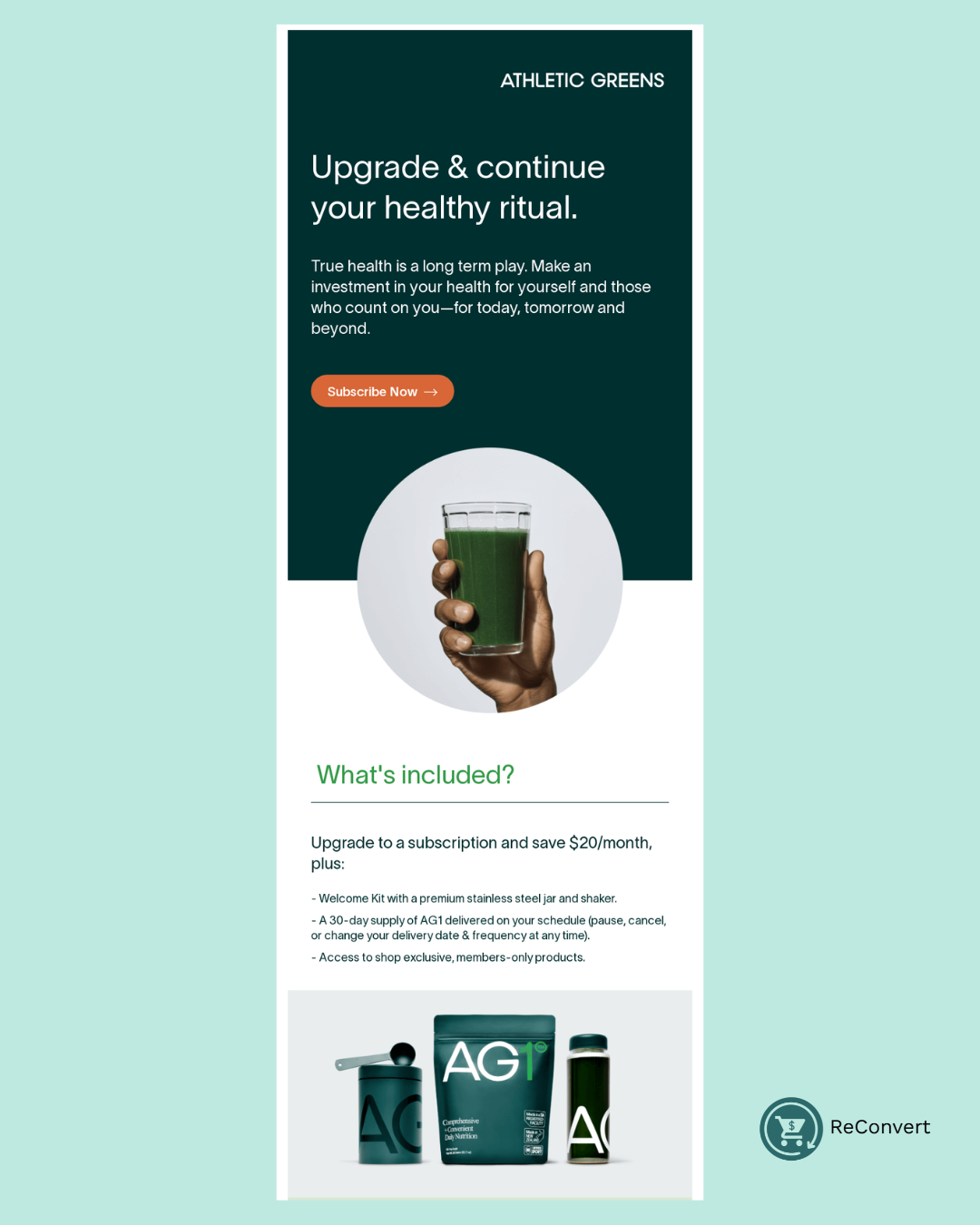
The upsell isn’t aggressive, it’s framed as a way to continue their healthy ritual while saving money each month. This kind of positioning feels more like customer care than sales pressure.
Best practices for post-purchase upsells
Post-purchase upsells can boost revenue, but only if they are done thoughtfully. A poorly timed or irrelevant offer can feel pushy, while a well-executed one creates a better shopping experience. Here are some best practices to keep in mind:
- Keep it relevant: Suggest products that make sense with the customer’s purchase. If someone buys a laptop sleeve, offer a matching backpack, not random items. With ReConvert, you can set conditional logic so upsells are always tied to what was just bought.
- Limit the choices: One or two focused upsell offers perform better than a crowded page. ReConvert’s widgets let you keep the experience clean and uncluttered.
- Use urgency carefully: Countdown timers or limited-time discounts can be powerful, but only if they feel authentic. ReConvert makes it easy to add urgency features to your upsells without going overboard.
- Highlight value: Frame the upsell around how it enhances the original purchase. ReConvert allows you to showcase bundles, discounts, and personalized recommendations that make the offer feel helpful.
- Test and optimize: Every store is different. With ReConvert, you can A/B test different upsell placements, product pairings, and offers to discover what drives the best results.
- Track metrics that matter: Monitor not just conversion rates, but also average order value uplift, total revenue, and repeat purchase rate. ReConvert’s analytics dashboard gives you a clear view of how your upsells impact the bottom line.
In short, best practices are much easier to follow with the right tools. ReConvert is built to help Shopify merchants launch high-converting upsells, keep them relevant, and measure their impact with precision.
Post Purchase Upsells: Wrap Up
Post-purchase upsells are more than a quick revenue boost, they are a strategic way to create better shopping experiences and deepen customer relationships.
From one-click add-ons to bundles, loyalty rewards, digital products, and even follow-up emails, every touchpoint after checkout is an opportunity to deliver value and increase AOV.
The key is relevance and timing. When upsells feel natural and helpful, customers are more likely to convert and come back for more. That’s why top-performing Shopify stores are using tools like ReConvert to optimize every post-purchase interaction, test what works, and measure the impact in real time.
If you are ready to stop leaving money on the table and start turning every order into a bigger win, get started with ReConvert today and unlock the full potential of post-purchase upsells in your Shopify store.





